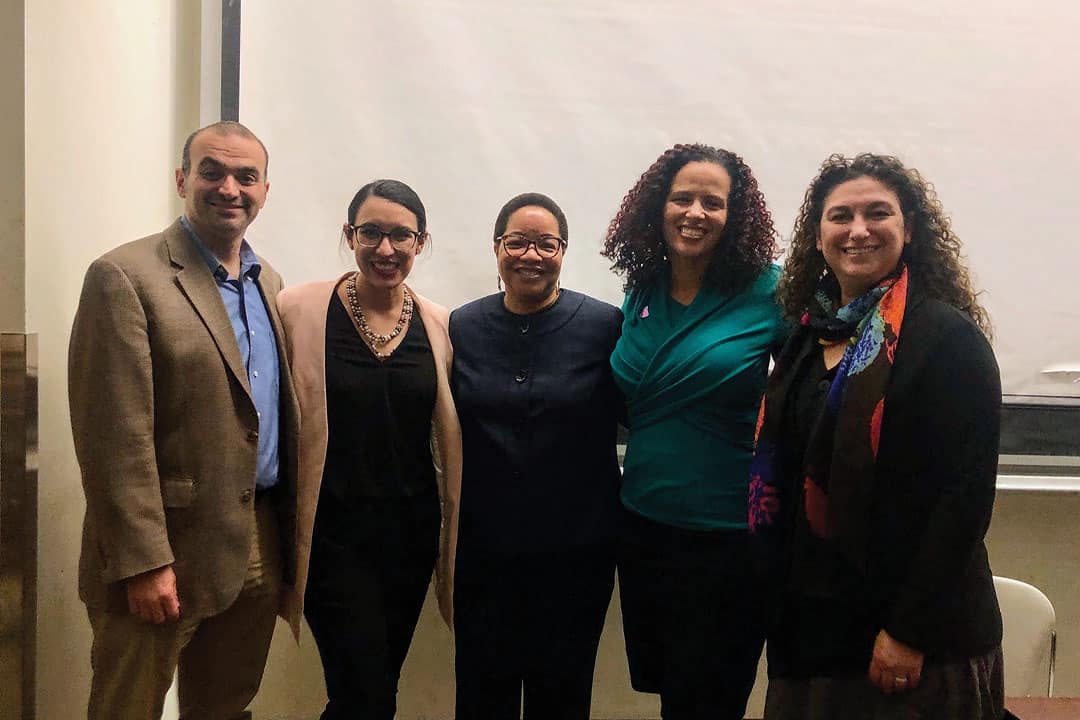At just five years old, Dr. Bryan Gaensler, Director of the Dunlap Institute for Astronomy & Astrophysics at U of T, decided to become an astronomer. After he attained the necessary qualifications, “it all just magically unfolded” for him.
However, Gaensler noted at the “Inclusion is the Path to Excellence: The Importance of Allyship in STEM” panel discussion that so many “five-year-olds around the world who also want to be astronomers or chemists… don’t get to be what they want to be when they grow up,” because of systemic barriers they may face.
The event took place on February 24 at the Bahen Centre for Information Technology and was organized by Women in Chemistry Toronto and the Chemistry Students’ Union.
The other panelists were Dr. Raychelle Burks, an assistant professor of chemistry at St. Edward’s University in Austin, Texas; Dr. Denise O’Neil Green, Vice-President Equity and Community Inclusion at Ryerson University; and Dr. Allison Sekuler, a professor at the Department of Psychology at McMaster University and the Vice-President of Research at the U of T-affiliated Baycrest Health Sciences hospital.
Ana Sofia Barrows, Project Coordinator of Equity, Diversity, and Inclusion at the Rotman School of Management, moderated the discussion.
What is allyship?
According to Forbes, allyship is “the key to unlocking the power of diversity.” There isn’t one clear definition of an ally, but generally speaking an ally is a person of privilege who actively supports marginalized groups of people. It may be a man advocating for his female colleague, white people supporting racialized people, neurotypical people amplifying neurodivergent voices, or cisgender, heterosexual people helping their LGBTQ+ peers.
The same article in Forbes adds that an ally also promotes “the culture of inclusion through intentional, positive and conscious efforts that benefit people as a whole,” and that allyship is based on “consistency and accountability with marginalized individuals.”
According to Barrows, the best definition of allyship she could find came from Roxane Gay’s piece “On Making Black Lives Matter,” which reads, “Black people do not need allies. We need people to stand up and take on the problems borne of oppression as their own, without remove or distance.”
Barrows added: “We don’t need people to just understand the problems, but we need them to feel the problems, to embed the problems, to empathize with the problems that exist from oppression.”
How to be a real ally?
According to Barrows, being a better ally starts with checking your own privilege — for example, by recognizing that living in Canada and being able to attend university and learn from diverse perspectives are all already huge privileges. Green noted that using your privilege to amplify others’ voices is “not just talking the talk, but it’s also walking the walk and recognizing that there is a power structure here and giving up power.”
Burks said that the motivation behind allyship is crucial — if it makes you feel good about yourself or like you’re doing “the right thing,” that’s not real allyship. “If [you’re] really putting yourself out there and doing the work, you should actually feel uncomfortable,” as confronting your privilege and implicit biases can be “painful,” she reflected.
Performative allyship — claiming to be an ally for social approval without productively helping the marginalized group in question — may even be worse than no allyship, she continued. Burks added that performative allyship “can be a trap,” as members of marginalized groups “get lulled into a false sense of security” and trust, until the “betrayal” comes.
Awareness of intersectionality, or the way multiple factors, such as gender, sexual orientation, race, citizenship status, disability, and gender expression interact to result in a complex pattern of marginalization. Furthermore, constantly learning and educating yourself is also crucial for developing a fuller understanding of the experiences of marginalized groups and hence, being a better ally.


